
Calico is a heavy plain-woven textile made from unbleached, and often not fully processed, cotton. It may also contain unseparated husk parts. The fabric is far coarser than muslin, but less coarse and thick than canvas or denim. However, it is still very cheap owing to its unfinished and undyed appearance.

Linen is a textile made from the fibers of the flax plant.

Velvet is a type of woven fabric with a dense, even pile that gives it a distinctive soft feel. By extension, the word velvety means "smooth like velvet". Historically, velvet was typically made from silk. Today, velvet can be made from silk, linen, cotton, wool, synthetic fibers, silk-cotton blends, or synthetic-natural fiber blends.

Muslin is a cotton fabric of plain weave. It is made in a wide range of weights from delicate sheers to coarse sheeting. It gets its name from the city of Mosul, Iraq, where it was first manufactured.

Woven fabric is any textile formed by weaving. Woven fabrics are often created on a loom, and made of many threads woven on a warp and a weft. Technically, a woven fabric is any fabric made by interlacing two or more threads at right angles to one another. Woven fabrics can be made of natural fibers, synthetic fibers, or a mixture of both, such as cotton and polyester.
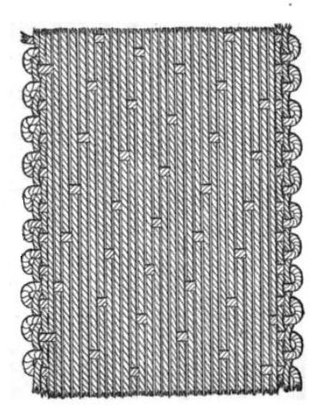
A satin weave is a type of fabric weave that produces a characteristically glossy, smooth or lustrous material, typically with a glossy top surface and a dull back; it is not durable, as it tends to snag. It is one of three fundamental types of textile weaves alongside plain weave and twill weave.

Poplin, also called tabinet, is a fine wool, cotton or silk fabric that has a vertical warp and a horizontal weft. Nowadays, the name refers to a strong material in a plain weave of any fiber or blend, with crosswise ribs that typically give a corded surface.
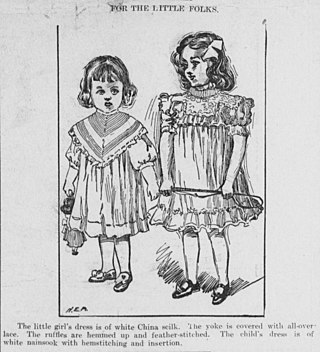
Nainsook is a soft, fine, lightweight form of muslin. Muslin encompasses a broad range of fabrics of varying weight and fineness, but is always a plain weave, cotton fabric. The word 'nainsook' is first documented in 1790, and derives from the Hindi word nainsukh, which literally means "eye's delight".
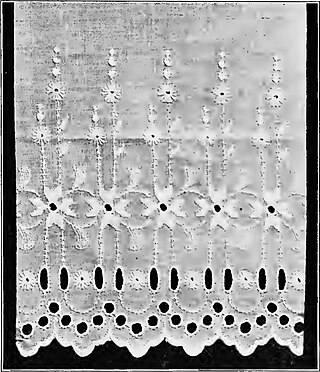
Cambric or batiste is a fine dense cloth. It is a lightweight plain-weave fabric, originally from the commune of Cambrai, woven greige, then bleached, piece-dyed, and often glazed or calendered. Initially it was made of linen; from the 18th and 19th centuries the term came to apply to cotton fabrics as well.

Piqué, or marcella, refers to a weaving style, normally used with cotton yarn, which is characterized by raised parallel cords or geometric designs in the fabric. Piqué fabrics vary from semi-sheer dimity to heavy weight waffle cloth. Twilled cotton and corded cotton are close relatives.

Crêpe, also spelled crepe or crape, is a silk, wool, or synthetic fiber fabric with a distinctively crisp and crimped appearance. The term "crape" typically refers to a form of the fabric associated specifically with mourning. Crêpe was also historically called "crespe" or "crisp".

Ninon is a lightweight, sheer fabric made with plain or leno weaving, it is a suitable material for curtains, evening wear and lingerie. Ninon is made with variety of filament yarns such as polyester, silk, rayon or nylon.

Bands are a form of formal neckwear, worn by some clergy and lawyers, and with some forms of academic dress. They take the form of two oblong pieces of cloth, usually though not invariably white, which are tied to the neck. When worn by clergy, they typically are attached to a clerical collar. The word bands is usually plural because they require two similar parts and did not come as one piece of cloth. Those worn by clergy are often called preaching bands or Geneva bands; those worn by lawyers are called barrister's bands or, more usually in Ireland and Canada, tabs.

Plain weave is the most basic of three fundamental types of textile weaves. It is strong and hard-wearing, and is used for fashion and furnishing fabrics. Fabrics with a plain weave are generally strong, durable, and have a smooth surface. They are often used for a variety of applications, including clothing, home textiles, and industrial fabrics.
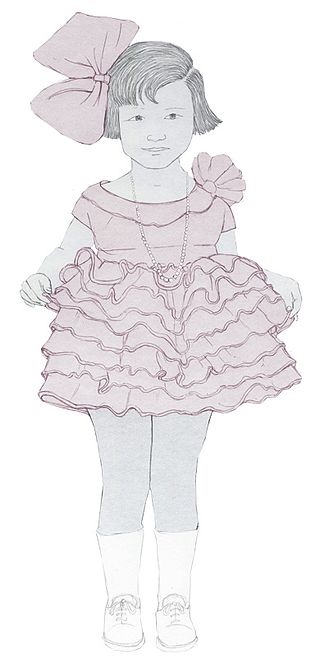
Organdy, also spelled Organdie, is a kind of fabric. It is a lightweight, balanced plain weave made of cotton with features of sheerness and crispness.
The manufacture of textiles is one of the oldest of human technologies. To make textiles, the first requirement is a source of fiber from which a yarn can be made, primarily by spinning. The yarn is processed by knitting or weaving, which turns yarn into cloth. The machine used for weaving is the loom. For decoration, the process of colouring yarn or the finished material is dyeing. For more information of the various steps, see textile manufacturing.

Textile fibers, threads, yarns and fabrics are measured in a multiplicity of units.
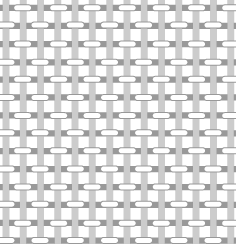
Madapollam is a soft cotton fabric manufactured from fine yarns with a dense pick laid out in linen weave. Madapollam is used as an embroidery and handkerchief fabric and as a base for fabric printing. The equal warp and weft mean that the tensile strength and shrinkage is the same in any two directions at right angles and that the fabric absorbs liquids such as ink, paint and aircraft dope equally along its X and Y axes.
Monk's cloth is a loosely woven cotton or linen fabric made of coarser yarns that drape well.
Dotted Swiss, or Swiss Dot, is a sheer cotton fabric embellished with small dots. It is a fine, lightweight plain weave cotton fabric, ornamented with embroidery or flocking with dotted patterns.


















